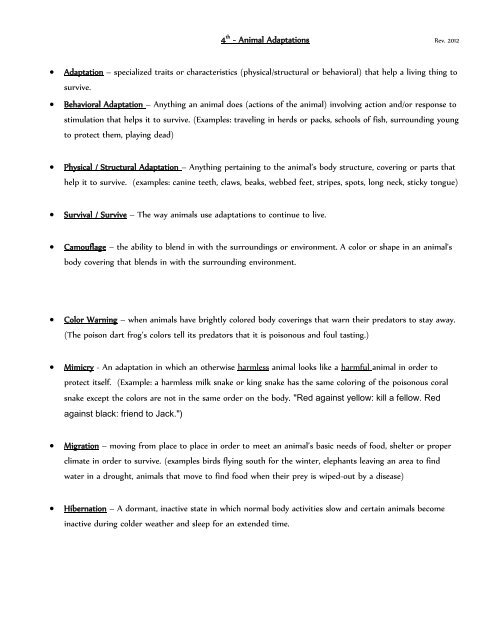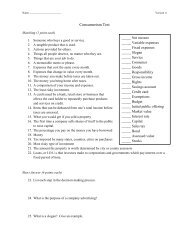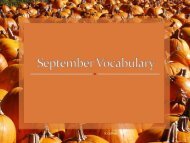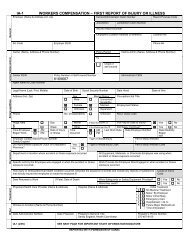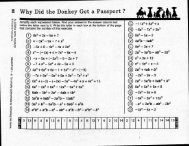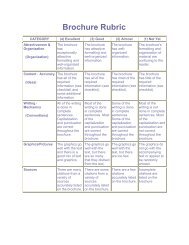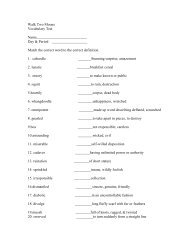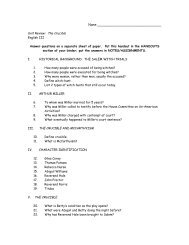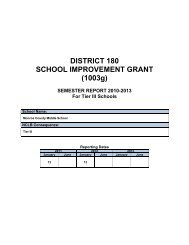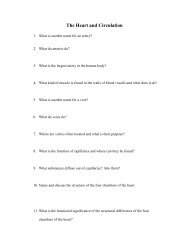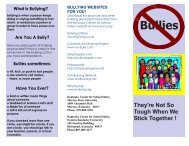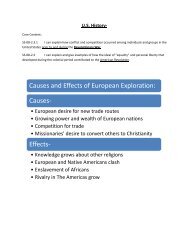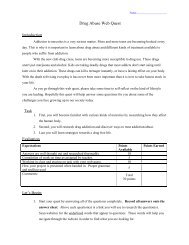Animal Adaptations - Monroe County Schools
Animal Adaptations - Monroe County Schools
Animal Adaptations - Monroe County Schools
- No tags were found...
Create successful ePaper yourself
Turn your PDF publications into a flip-book with our unique Google optimized e-Paper software.
4 th - <strong>Animal</strong> <strong>Adaptations</strong> Rev. 2012<br />
<br />
<br />
Adaptation – specialized traits or characteristics (physical/structural or behavioral) that help a living thing to<br />
survive.<br />
Behavioral Adaptation – Anything an animal does (actions of the animal) involving action and/or response to<br />
stimulation that helps it to survive. (Examples: traveling in herds or packs, schools of fish, surrounding young<br />
to protect them, playing dead)<br />
<br />
Physical / Structural Adaptation – Anything pertaining to the animal’s body structure, covering or parts that<br />
help it to survive. (examples: canine teeth, claws, beaks, webbed feet, stripes, spots, long neck, sticky tongue)<br />
<br />
Survival / Survive – The way animals use adaptations to continue to live.<br />
<br />
Camouflage – the ability to blend in with the surroundings or environment. A color or shape in an animal's<br />
body covering that blends in with the surrounding environment.<br />
<br />
Color Warning – when animals have brightly colored body coverings that warn their predators to stay away.<br />
(The poison dart frog’s colors tell its predators that it is poisonous and foul tasting.)<br />
<br />
Mimicry - An adaptation in which an otherwise harmless animal looks like a harmful animal in order to<br />
protect itself. (Example: a harmless milk snake or king snake has the same coloring of the poisonous coral<br />
snake except the colors are not in the same order on the body. "Red against yellow: kill a fellow. Red<br />
against black: friend to Jack.")<br />
<br />
Migration – moving from place to place in order to meet an animal’s basic needs of food, shelter or proper<br />
climate in order to survive. (examples birds flying south for the winter, elephants leaving an area to find<br />
water in a drought, animals that move to find food when their prey is wiped-out by a disease)<br />
<br />
Hibernation – A dormant, inactive state in which normal body activities slow and certain animals become<br />
inactive during colder weather and sleep for an extended time.
Behavior – The actions of animals<br />
<br />
Instinct – A behavior an animal is born with and does not have to learn. (In humans crying is an instinct<br />
since we can’t talk when born; baby animals search for their mother’s body to find milk or birds open their<br />
mouths to receive food from their parents; baby sea turtles dig out of the sand and crawl straight to the<br />
water)<br />
<br />
Predator – An animal that hunts and eats other animals for food.<br />
<br />
Prey – An animal that is hunted and eaten by another animal for food.<br />
<br />
Herbivore – animals that eat only plants.<br />
<br />
Carnivore – animals that eat other animals (meat-eaters).<br />
<br />
Omnivore – animals that eat both plants and other animals.


